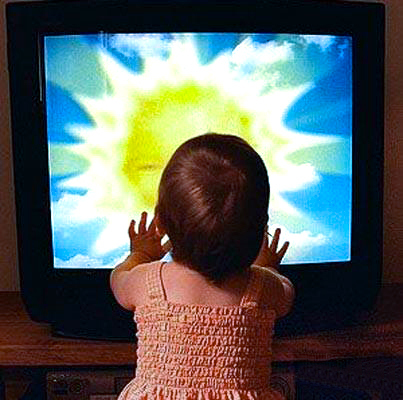TV Injuries In Toddlers On The Rise
We all know that the greatest motivation most CEOs have, besides manipulating us into thanking them for taking our money, is to stealthily make their product less durable, impossible to repair and contain less resources. Such is the fairly new issue of televisions… which are now falling on our kids!
Over the past twelve years TVs have left the floor and climbed onto our walls. They’ve gotten gigantic, and flat, and no longer are self-stabilized. They no longer require substantial furniture to contain the portable models and with a mere breath of a breeze go careening to the floor… or onto the head of a toddler.
A recent study in the medical journal “Pediatrics” reported about data gathered on TV injuries from the Consumer Safety Division used in a study from Columbus Ohio. According to the researchers, 17,000 children are injured severe enough to be seen in the ER by televisions each year. That was the average number between 1990 and 2011, but the researchers analyzed national data over a 20-year period.
The rate of injuries from falling TVs nearly doubled in the study period! Many, if not most, were due to inadequately stabilized table-top units or those improperly anchored to the wall.
Look around at your TVs. Give ’em a tiny push. Do they wobble dangerously or are they completely out of the reach of a five or six year old? That’s the age group most affected by TV-related injuries.
Head and neck wounds and concussions are the most common injury. About 36% were lacerations and another 35% soft tissue damages.
Greater than 50% of injuries each year are from falling TVs, another 38% were from a child striking the TV.
Short of waiting for OSHA or some governmental agency to mandate bolts, suction cups or bungee straps be added to the price of each TV sold, there are easy and cheap anchoring devices available which can eliminate the danger.
The problem is that in all our anxiousness to embrace “new-fangledness” we sort of let new technology outstrip our established methods of living safe. We’ve learned the hard way that every time something gets smaller we need to think “who’s going to put this in their mouth,” or “what’s going to get stuck in that hole.” We need to do the same thing with every time we see a TV get smaller and lighter – “Who’s this gonna’ fall on?”
2 Posts in Children's TV (tvtime) Series
- TV Injuries on the Rise in Children – 15 Nov 2013
- Part 1 - TV time – 4 May 2013

